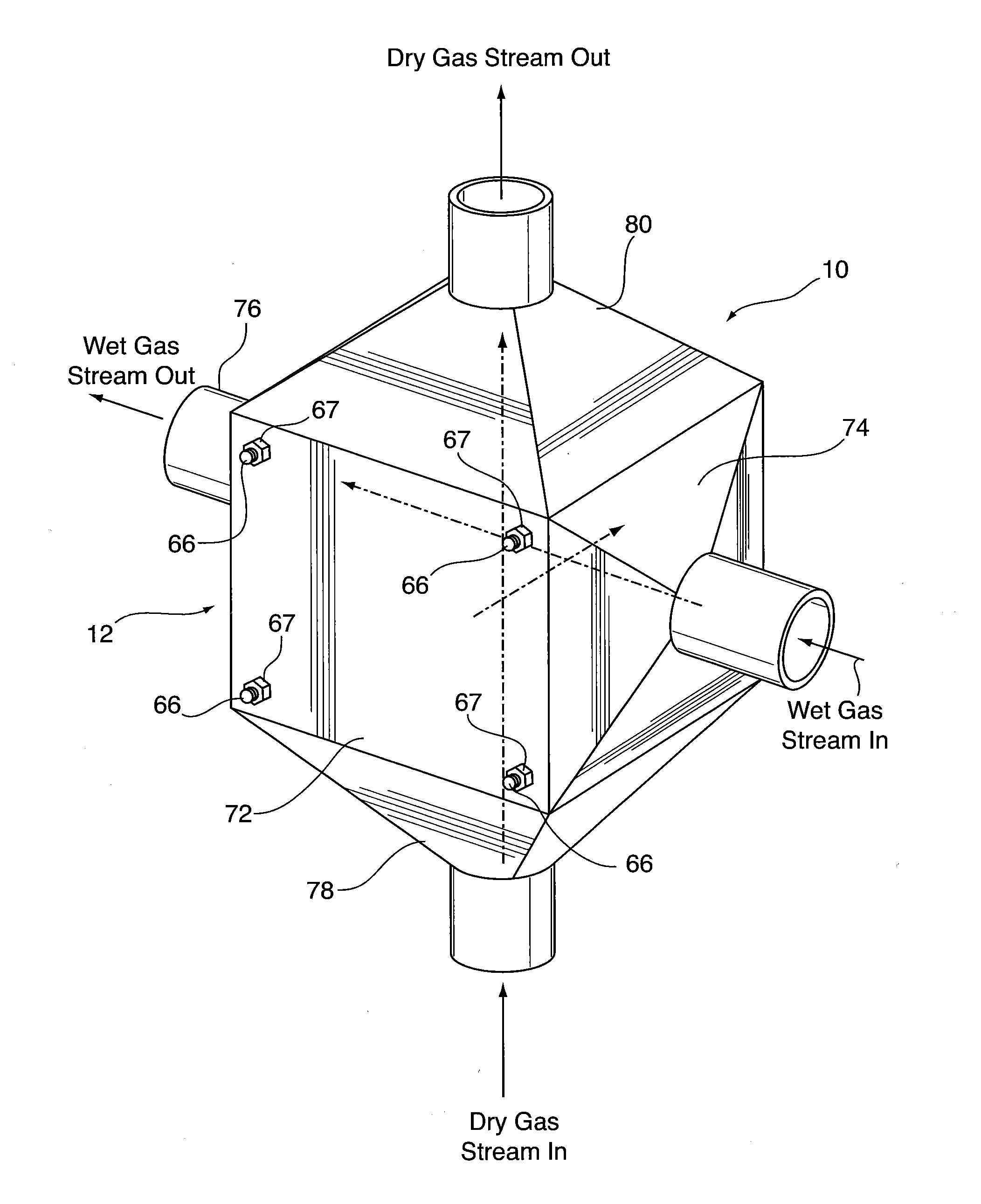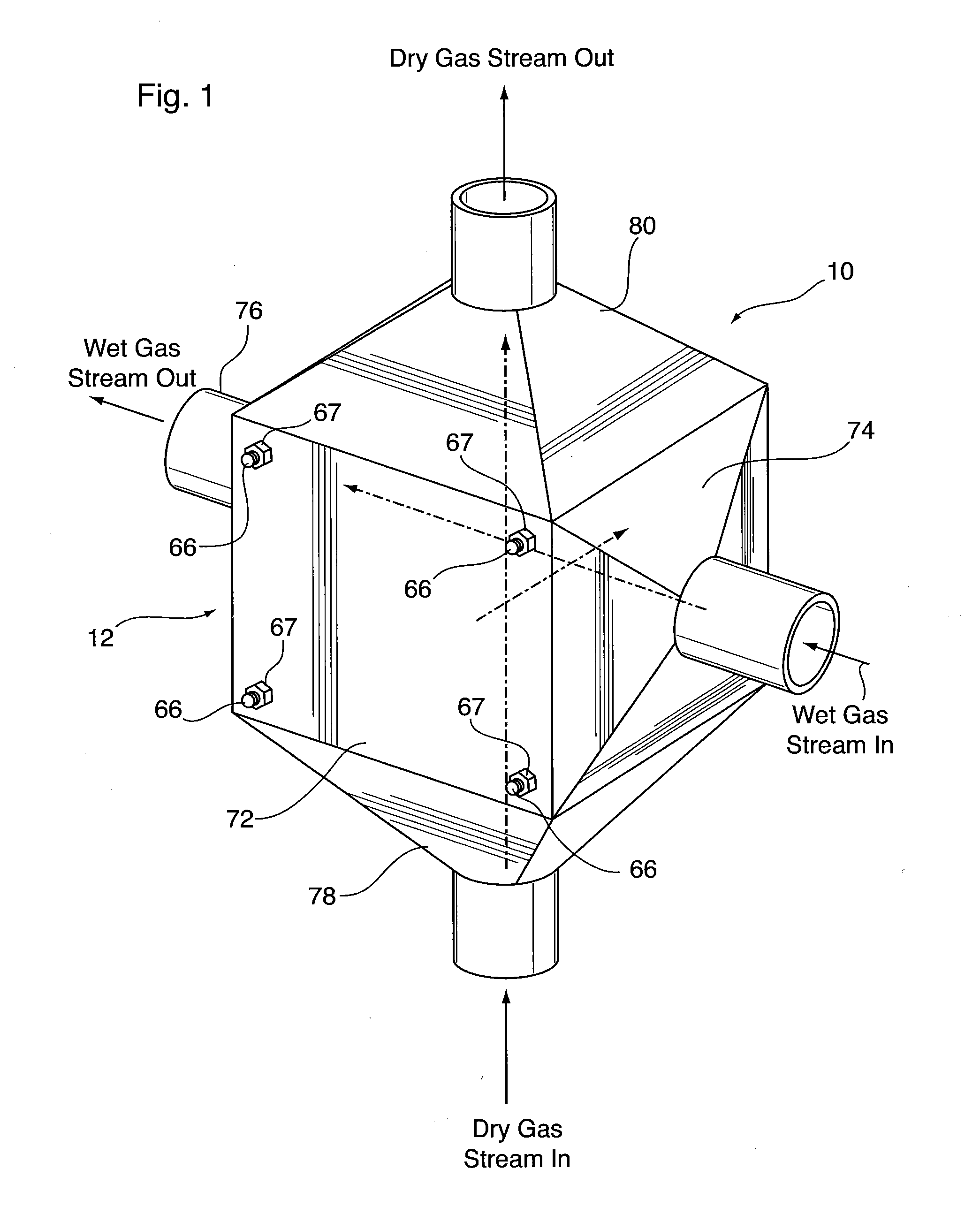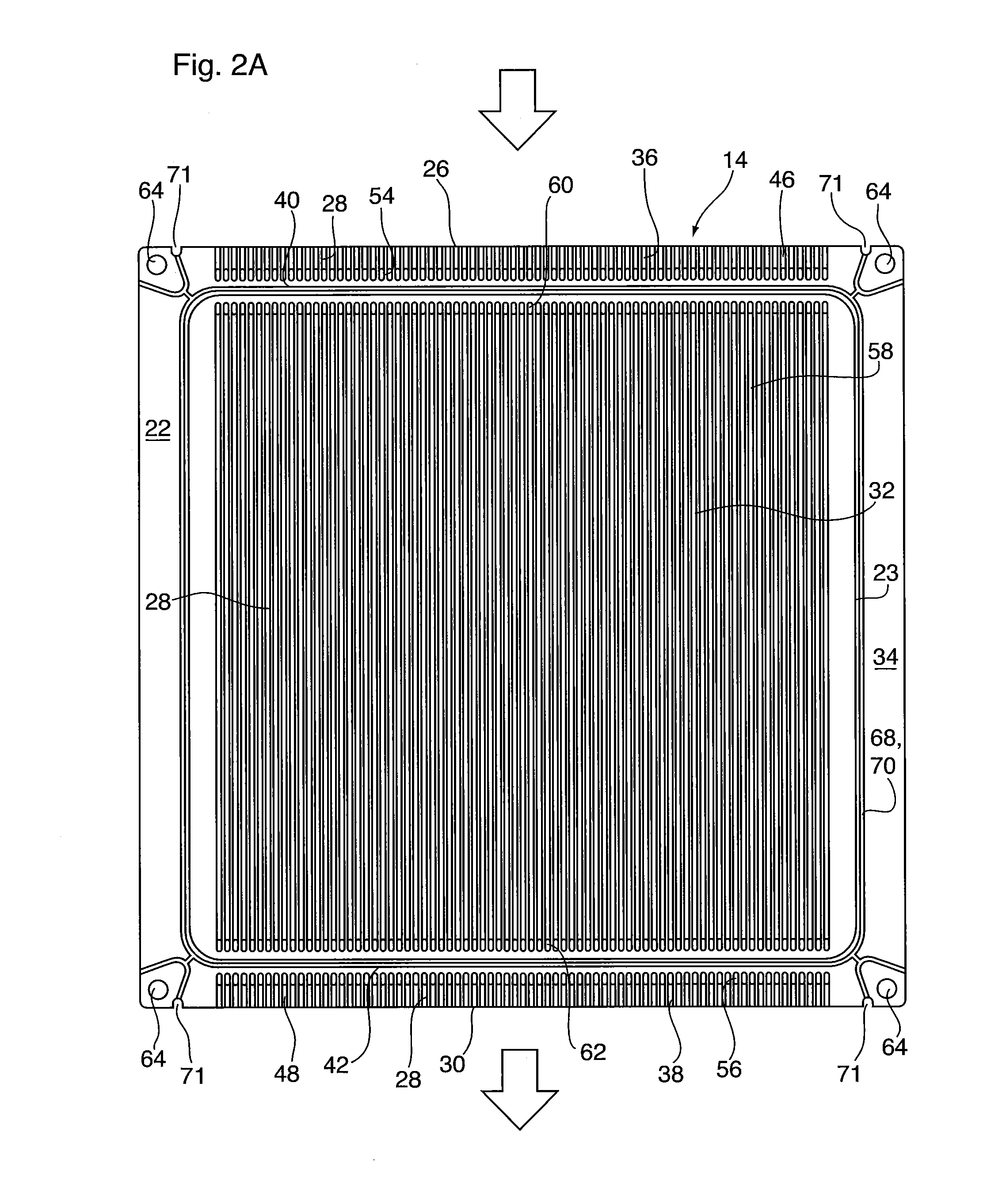Humidifier for Fuel Cell Systems
- Summary
- Abstract
- Description
- Claims
- Application Information
AI Technical Summary
Problems solved by technology
Method used
Image
Examples
first embodiment
[0047]Illustrated in FIGS. 1 to 8 is a humidifier 10 according to a Humidifier 10 is made up of a core 12 comprising a stack of plates, further described below, and two pairs of manifolds located external to the core 12. In the following description, the terms “core” and “stack” are used interchangeably.
[0048]The core 12 has a total of six faces, with the wet gas stream entering the core 12 through one of its faces and exiting the core 12 through an opposite face. Similarly, the dry gas stream enters the core 12 through one of its faces and exits the core 12 through an opposite face. The remaining two faces are not involved in water exchange, but serve as mechanical fixturing surfaces for compression assembly of the humidifier stack between a pair of structural end plates 72, 173, as further described below and illustrated in FIG. 7.
[0049]The core 12 of humidifier 10 comprises a plurality of wet plates 14 and a plurality of dry plates 16 stacked in alternating order throughout the ...
second embodiment
[0093]A humidifier 110 is now described below with reference to FIGS. 9 and 10. Humidifier 110 is identical to humidifier 10 above in all respects, except for the differences noted below, and therefore the description of the elements of humidifier 10 applies equally to humidifier 110, unless otherwise stated. Also, in the drawings and in the following description, like elements of humidifiers 10 and 110 are identified by like reference numerals.
[0094]The humidifier 110 according to the second embodiment comprises a core 12 which is constructed from wet and dry plates 14, 16, membranes 18 and gas diffusion layers 20. The wet and dry plates 14, 16 used in the core 12 of humidifier 110 are identical in all respects to the wet and dry plates 14, 16 of humidifier 10, except for the construction of the flow field 32. In humidifier 110, the flow fields 32 of the plates 14, 16 are traversed by support ribs 28, and adjacent ribs 28 are connected by webs 82. In contrast to the elongate webs ...
third embodiment
[0096]A humidifier 210 is now described below with reference to FIGS. 11-15. Humidifier 210 is a cross-flow humidifier and is identical to humidifier 10 in all respects, except as noted below. Therefore the description of the elements of humidifier 10 applies equally to humidifier 210, unless otherwise stated. Also, in the drawings and in the following description, like elements of humidifiers 10 and 210 are identified by like reference numerals.
[0097]Humidifier 210 differs from humidifier 10 in that the inlet and outlet manifolds for the wet and dry gases are integrally formed as part of the core 12. This avoids the need to provide separately formed, external manifolds 74, 76, 78, 80 which must be sealed to the core. In order to provide integral manifolds, each wet and dry plate 14, 16 making up humidifier 210 includes manifold openings which, when the plates 14, 16 are stacked, will form the respective inlet and outlet manifolds for the wet and dry gas streams. The plates 14, 16 ...
PUM
| Property | Measurement | Unit |
|---|---|---|
| thickness | aaaaa | aaaaa |
| thickness | aaaaa | aaaaa |
| thickness | aaaaa | aaaaa |
Abstract
Description
Claims
Application Information
 Login to View More
Login to View More - R&D
- Intellectual Property
- Life Sciences
- Materials
- Tech Scout
- Unparalleled Data Quality
- Higher Quality Content
- 60% Fewer Hallucinations
Browse by: Latest US Patents, China's latest patents, Technical Efficacy Thesaurus, Application Domain, Technology Topic, Popular Technical Reports.
© 2025 PatSnap. All rights reserved.Legal|Privacy policy|Modern Slavery Act Transparency Statement|Sitemap|About US| Contact US: help@patsnap.com



